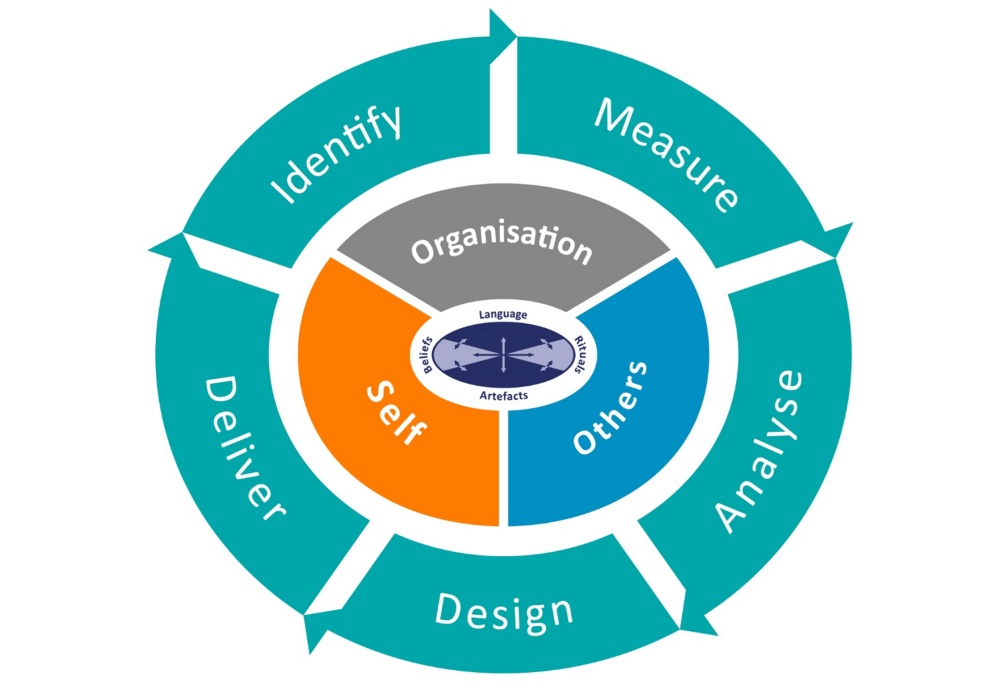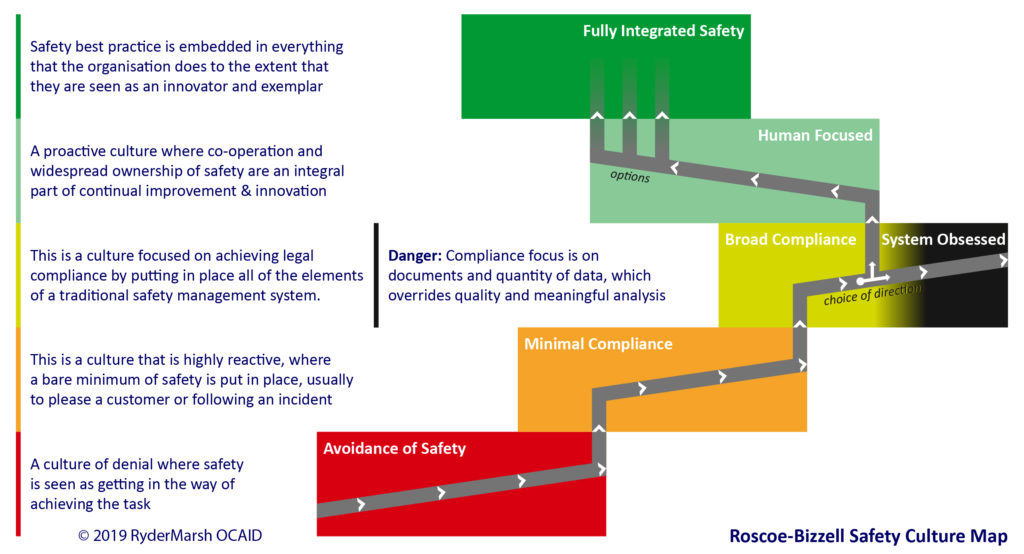OCAID Safety Culture Survey & Assessment
Still have a question?
If you can’t find the answer to your questions, please get in touch.
At a Glance
What we do & why
Our Safety Culture Assessment consists of the following:
The survey & assessment process is based on structured interviews with a cross section of your organisation’s workforce.
Focus group participants will first have the opportunity to express their views on a number of different domain areas, so that organisational specific issues can be identified.
Participants are then asked to select from a number of statements the one that is most representative of the organisation’s present situation.
We also offer an enhanced assessment incorporating the use of safety observations and conversations with staff during their working day.
The addition of this exercise permits the inclusion of specific topics and or risk issues. It further enhances the interview process through direct observation of the workplace culture in terms of Artefacts, Rituals and Language.
Our proven safety culture change consultants will analyse survey results across your workforce and use their experience to provide detailed feedback on your ‘baseline’ state.
A written report is supported by a presentation that talks through the various graphs and findings in the report.
Feedback from the Culture Assessment is typically presented centrally to the Senior Leadership and the Project/HSE Team.
This provides the opportunity for questions to be asked and clarification provided. It also gives a chance for the findings to be put in context.
Local site feedback and action planning can also be factored into our engagement – particularly useful for organisations with multiple sites and therefore a number of different micro-cultures.
Why? At OCAID, we approach culture change through a unique Cultural Safety® Programme framework. At the centre of this model is culture – one of the greatest drivers for our behaviour as human beings:

A successful Safety Culture Development Programme starts by exploring the existing culture of your organisation, establishing a baseline for intelligent and informed safety culture change planning.
Who is the Safety Culture Survey & Assessment for?
Our survey is suitable for:
- Organisations at any stage in their H&S journey, who are aiming for a step-change in their safety culture.
- Organisations where safety performance has plateaued and who need a roadmap to the next level of excellence.
What’s in it for you?
Establishing an accurate understanding of your organisation’s safety culture is crucial in order to target safety culture change activities most effectively.
Having a clear baseline also gives you the ability to measure the success of cultural change interventions.
It is pertinent to the organisation because it will support the business in increased productivity, reduced injury rates, enhanced leadership and improved employee engagement.
Safety Culture Survey Deliverables
Each engagement is tailored to the individual organisation and will include the following:
- In person surveys with a statistically robust (never simply a blanket percentage!) cross section of your workforce
- Optionally, safety observations and conversations with staff during their working day
- Written report with survey results and our recommendations for the optimum improvement programme for your organisation. Where appropriate, this will be tailored to individual sites/work groups.
- Interactive presentation to your Senior Leadership the Project/HSE Team, providing the opportunity for questions/clarifications. Where appropriate, local site presentations can also be factored into our engagement.
Frequently Asked Questions
The fact is, you can’t! There is no actual unit of measurement.
What we can do is accurately assess & benchmark safety culture.
Safety Culture is shaped by the collective values/beliefs of a work group related to the importance of safety. These values, beliefs and attitudes are often expressed in day-to-day work-related behaviours, and therefore can have a direct impact on the operational safety of a plant, factory, worksite or office. Crucially there are also indirect impacts on organisations that work with, for, or under the direction of that work group, for example contractors, or within the supply chain.
Attempts to improve H&S can often be influenced by the organisation’s level of development, which is characterised by the degree to which employees feel that they can openly communicate information and trust the management to act appropriately. Although levels of development can be thought of as a continuous line, discrete stages of development can be defined. These stages are outlined in the RyderMarsh OCAID Safety Culture Development Map. These stages of development provide key indicators that are representative of an organisation at each Safety Culture Development Level. RyderMarsh OCAID defined six discrete stages of development, these are: Avoidance of Safety, Minimal Compliance, Broad Compliance, System Obsessed, Human Focused and Fully Integrated Safety, as shown in the diagram below.

Whilst formal Safety Systems are a necessary and key element in a Safety Culture and should be the first thing that are considered, focusing purely on systems will only drive safety improvement so far before the law of diminishing returns sets in.
However good an organisation’s safety systems are, a focus on those alone is ultimately insufficient to drive continuous safety improvement and introduces the danger of transitioning to the system-obsessed state.
Establishing an accurate understanding of your organisation’s safety culture is crucial in order to target safety culture change activities most effectively and measure success.
To generate useful, accurate data, it’s crucial that we survey a statistically robust cross-section of your workforce.
What this equates to in percentage terms will vary depending on the size and structure of your organisation.
The level of detail you’d like reported back is another determining factor. For more granular feedback – by role for example, rather than by site or department – we will normally need to survey a higher proportion of your employees, to obtain a statistically robust sample size.
As an external organisation, we start from a good ‘neutral’ position.
Most importantly, all our focus groups are held on condition of annonymity – no names are reported. We make this clear at the beginning of every session.
In addition, we will always ask express permission to use any verbatim quotes that we think might be helpful to convey our findings – but these are always reported anonymously.
No.
A psychometric-based Health & Safety Climate Survey generally provides a numeric scoring of your health & safety ‘climate’.
The advantage of the OCAID survey is that as well as a quantitive result which aids benchmarking, you will also receive a detailed qualitative assessment. Our aim is to identify your organisation’s overall safety culture and any micro-cultures that exist (either within departments or organisational levels) and the issues that underlie its present level of development.
You will be presented with findings based on the survey results together with recommendations drawing on the extensive international experience of our cultural change experts.
By contrast, an H&S Climate Survey may uncover what people are thinking and feeling, but won’t discover why, without further focus groups and interviews.

